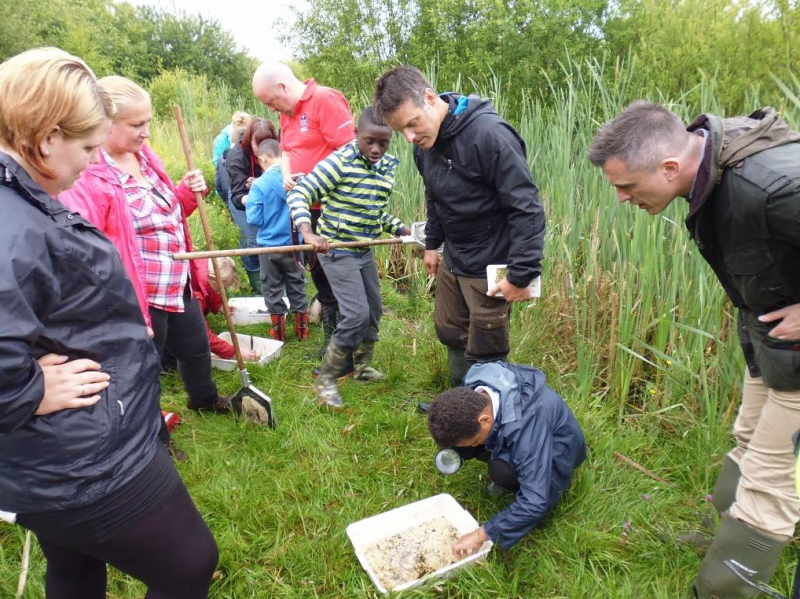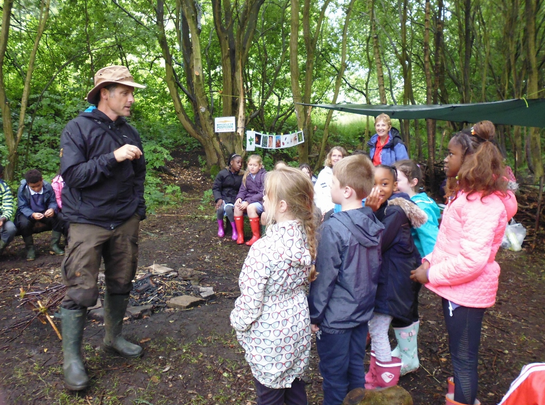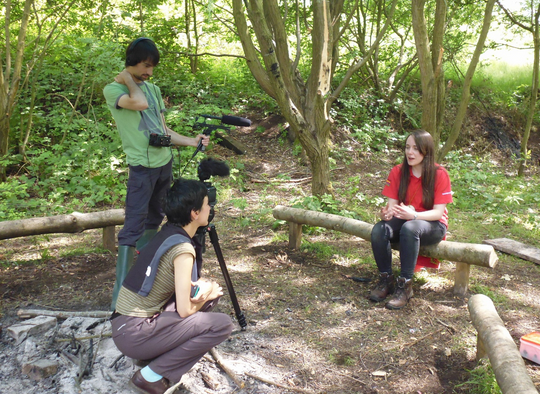
Writing about wildlife: becoming a communications officer in conservation
My last interview was with Kathryn Phillips from the Lancashire Wildlife Trust in north-west England. I run the communications campaign for Kathryn’s Forest Schools project and that interview is part of the work that goes into raising the Trust’s profile, publicising its activities, and strengthening the case for conservation.
Writing articles, film-making, and wider communications work is a popular career path for many young conservationists. I work closely with Alan Wright, the senior communications and campaigns officer with the Lancashire Wildlife Trust. I talk here to Alan about how he got to where he is and his key tips for getting those communications jobs.
What work do you actually do as a communications and relationships lead for a conservation NGO?
My role is to raise the profile of the Lancashire Wildlife Trust specifically and of the UK’s Wildlife Trust movement in general. That’s publicising our work, at regional and national levels, and driving forward relationships with partners and funders. I write press releases and news stories, make media appearances on TV and radio, and produce social media and other output. I write content for grant applications, organise events, and run public competitions. I also manage internal communications to ensure staff know what is going on and facilitate collaboration across our work areas.
Individual media pieces fit within communications plans and campaigns. Communications plans are about how projects communicate with their various audiences. Campaigns are broader programmes to raise awareness, typically focused on a charismatic species, and help maximise the support we can get for connected projects and activities. It’s important to coordinate and make sure everything is done “on brand” for recognisable quality output that builds the Trust’s standing.
Underpinning everything is getting out and meeting people, building up my knowledge of what we do, and developing relationships. That’s brilliant as I get involved with conservation activities too – whether shearing sheep on one of our reserves or going pond dipping with British TV naturalist Nick Baker.
Sounds like fun! What are the highlights of the job?
The best moments are at events, talking to people about what we do, and seeing faces light up. Of course, I feel great satisfaction seeing my coverage out there in the press and on TV. I’m lucky that my role has such tangible public content.
I love working with the staff, volunteers and visitors out on our reserves and in the offices. The Lancashire Wildlife Trust really is a team, it’s a fantastic place to work, and we go through the highs and the lows together. There aren’t many lows but what I find hardest is seeing my own mistakes. Typos, copy that isn’t as good as it should have been, and rare factual errors are, however, inevitable when I’m writing tens of thousands of words in a year.
Unsuccessful grant applications and proposed projects that we’re unable to get off the ground are tough. It’s not so much regret at the work that has gone in to no avail – rather the heartbreak of seeing your vision of the project’s impact on wildlife and people evaporate.
How did you come to work for the Wildlife Trust and what did you have that got you the opportunity?
I studied journalism after leaving school and worked as a journalist for 30 years. Except for 2 years with a newspaper in Bermuda, I’ve spent my working life in the area covered by the Lancashire Wildlife Trust. I fancied a change after all that time, saw a press officer job with the Trust, and applied.
Without a university degree and with no wildlife work experience I was very lucky to get the job! At the interview, I poured my heart out about wanting to work here and make a difference. The Trust’s Head of Development saw something in me and the way I talked about the Trust’s work on a level that would engage the general public.
That’s the key thing with a communications role. You must be able to share the conservation message with everybody, not just a select few. You don’t need to be a wildlife expert – it’s about knowing enough to communicate to people at an appropriate level (which will of course vary with your audience!).
What key careers advice would you give to young people pursuing press and media work in conservation?
I advise any young person to get a university degree as there are jobs you need it for. My biggest mistake was not having a degree and that has closed doors to me in my career. I was lucky in being interviewed by an insightful recruitment team at the Lancashire Wildlife Trust and I’m eternally grateful for the opportunity. But give yourself the best possible springboard by getting that degree under your belt – it will also raise the glass ceiling for later in your career.
I didn’t have any specific conservation experience but I did have 30 years working in media. Being realistic, you’re going to need experience and that will probably be as a volunteer. You mix with the right people and establish your reputation. I’d advise you to develop a specialism too, whether that’s birds, badgers or bumblebees, and you’ll find great opportunities with local amateur groups. Position yourself with your volunteer experience and a portfolio and eventually you’ll find that job opening.
With bad news dominating media outlets, every so often a newsroom will be interested in a positive story about nature. Keep knocking on the door with your media pitches. The ideal contact is a young reporter (perhaps someone you went to university with) or someone in a new job, both situations in which they’ll be trying to make a good impression. A couple of nice photographs will always help them push your story with the editor.
The project I work with you on, supported by players of People’s Postcode Lottery, is unusual in specifically requiring a communications component. What is the significance of that?
Historically, all our projects have been conservation-led with communications as a second string activity with little money to pay for it. The Forest Schools project centred on our Moston Fairway nature reserve has been a watershed in getting the value of communications recognised. People’s Postcode Lottery allocated a separate budget specifically for communications and we employed you [interviewer Adam Moolna] for 2 days a week of dedicated focus. The project would otherwise be just one of 40-odd projects that I’m covering and so would get less than one hour each week, which couldn’t do it justice.
The media output and relationship building from this project has been ground breaking. Resources such as the publicity video for Moston Fairway have raised the bar for how we promote our other nature reserves. Moston Fairway is a small reserve but it is now established as a flagship for the Trust directly because of the communications work. The People’s Postcode Lottery project is first in line for any invites we get for media pitches (for example the BBC looking for a feature in their national Countryfile or Autumnwatch TV programmes) because we have that dedicated staff resource.
More than that, we’ve had lots of people contacting us asking how they can get involved with our general Forest Schools programme. The Forest Schools movement takes a learner-centred approach to outdoor education and play in a woodland environment. We’re showing the potential for kids to begin life-long relationships with the natural world, at the same time as developing their resilience, creativity and confidence. The People’s Postcode Lottery project has a double impact bringing children into Forest Schools – directly through the project sessions and indirectly through attracting other groups to get involved.
Other funders have seen what is possible and want similar visibility. They’re taking communications more seriously than ever before. If we can convince them to allocate the resources needed using the People’s Postcode Lottery example, then our output and the Trust’s profile will blossom even further.
What are the challenges of your work and what tips would you give for juniors?
More than anything you need a thick skin. No matter what you write, there will be people that complain. Have confidence in your ability and the overall positive impact your work has. Also don’t be fearful that people are trying to catch you out. No-one in the media is trying to trip you up, they just want you to tell the story in your own words.
Be passionate about the stories you tell and speak with informed passion – but don’t try to give too much information. Imagine that you’re telling the story to friends at a social gathering. You’re starting with a politely interested audience but you’ve got to communicate a clear story quickly or they’ll lose interest.
One of the biggest challenges, which might come as a surprise, is to convince your own conservation staff that what they’re doing is newsworthy. People aren’t used to talking about what they do – and don’t realise that what they’re doing is so amazing. You rely on people telling you the stories so you have to help people feel comfortable talking to you. Persuading people to talk about what they do and share their stories is a major part of the job.
Whether you’re looking to be a film-maker or a journalist, whether you want to be part of an NGO team or to be an independent freelancer, take inspiration from Alan and get out there sharing your conservation stories.
Adam Moolna was talking to Alan Wright, Senior Communications and Campaigns Officer with the Lancashire Wildlife Trust in north-west England. Adam works part-time as Communications Officer (Forest Schools) for the Trust and also through Giant Tortoise Environment & Conservation Limited. See www.giant-tortoise.co.uk and @DrAdamMoolna on Twitter.





